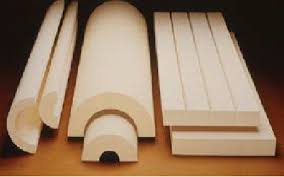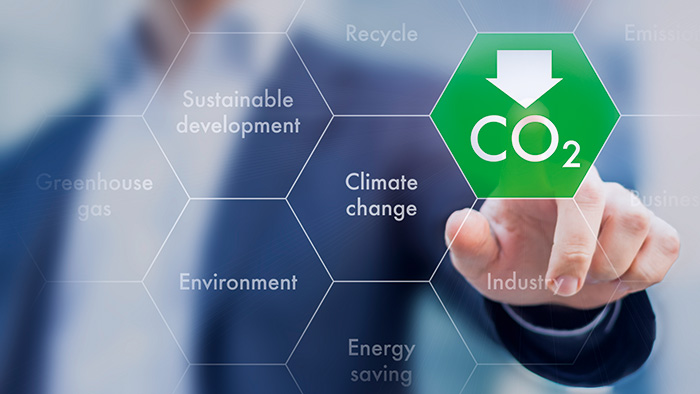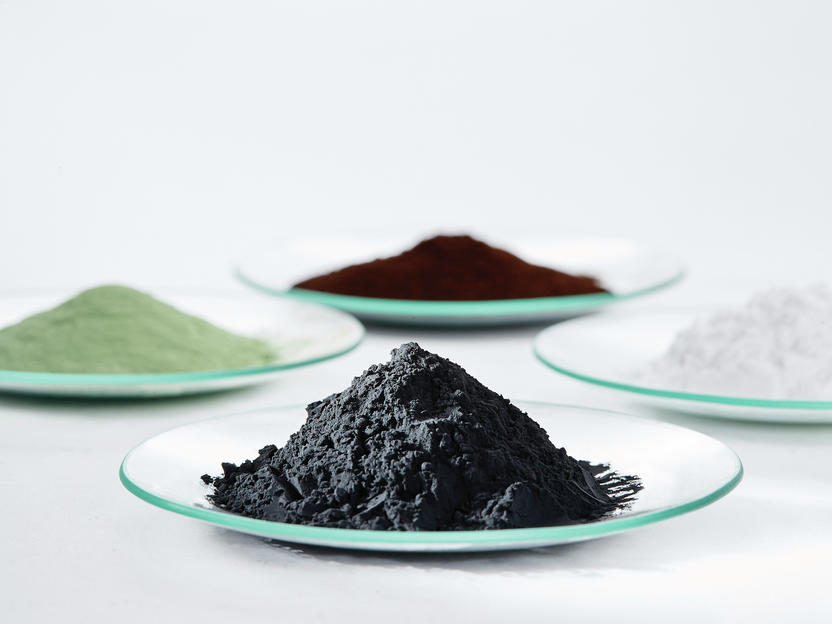Calcium Silicate as Insulation Material for Green Buildings

“Although calcium silicate insulation is lightweight and provides excellent heat insulation, its thermal conductivity increases at high temperatures when radiant heat transfer is more significant. Green Feather Silica Boards, which regulate radiant heat transmission, have very low thermal conductivity even at high temperatures, allowing for significant energy savings and carbon dioxide emissions reductions.”
History of Calcium Silicate
Around 1950, calcium silicate emerged from older high-temperature thermal insulations such as 85% magnesium carbonate and 100% asbestos insulation. Originally, asbestos fibers were used to enhance calcium silicate insulation. Most North American industries had shifted to glass fiber, plant fibers, cotton linters, or rayon by the end of 1972. Calcium silicate made in North America now contains no asbestos.
Asbestos-free calcium silicate was widely used as a replacement material on piping and equipment at oil refineries, petrochemical plants, power plants, steam distribution lines, and other high-temperature applications requiring a high-strength insulation material when industrial facilities began asbestos insulation abatement programs in the 1970s. In North America, there are currently just two production units producing calcium silicate insulation.
How Calcium Silicate is Made?
Amorphous silica, lime, reinforcing fibers, and other additives are mixed with water in a batch-mixing tank to make a slurry of calcium silicate. This slurry is piped to the preheater, where it is heated to boiling and placed into molds as rapidly as possible. The material is removed as a moist and brittle solid after a few minutes. For many hours, these formed pieces are placed in an incubator (a type of steam pressure cooker), where the chemical process that forms calcium silicate takes place. After that, the pieces are placed in a drying oven. The pieces are cut, split into two or more pieces, and wrapped after drying.
Because the greatest temperature reached is only about 380°F, the process is comparatively low-energy.
The cured, molded insulation material resembles a crystalline structure with more air space than solid space (greater than 90 percent air). Calcium silicate's insulating properties are due to millions of microscopic air voids separated by low-thermal-conductivity crystalline walls. It is an effective high-temperature insulation material because it allows very little infrared radiation to flow through it.
What is a green building?
A ‘green' building is one that, by its design, construction, or operation, reduces or eliminates negative effects on our climate and natural surroundings while also having the potential to create positive ones. Green buildings help to protect the environment while also improving our quality of life.
A building can have several attributes that make it "green." These are some of them:
- Energy, water, and other resources are used more efficiently.
- Solar energy, for example, is a renewable energy source.
- Measures to reduce pollution and trash, as well as the facilitation of re-use and recycling
- Satisfactory indoor air quality
- Non-toxic, ethical, and long-lasting materials are used.
- Environmental considerations in design, construction, and operation
- In the design, construction, and operation of a building, the residents' quality of life is taken into account.
- A design that allows for changes in the environment to be accommodated.
Any structure, whether it's a home, an office, a school, a hospital, a community center, or anything else, can be a green building if it has the criteria stated above. It is important to note, however, that not all green buildings are – or need to be – the same.
Different countries and areas have different climatic conditions, cultures and traditions, different types and ages of buildings, and different environmental, economic, and social concerns, all of which influence their approach to green building.
What are the Benefits of Calcium Silicate?
- By absorbing moisture and regulating dampness in walls, it is ideal for minimizing structural damage from rising damp and wind-driven rain.
- Allows moisture to circulate freely through the wall and evaporate quickly, allowing it to dry faster and more readily.
- It is appropriate for use on existing breathable walls and materials since it is twice as breathable as lime plaster.
- It has lime in it, which is poisonous to mold.
- By removing mold, it helps to improve indoor air quality and create a healthy living environment for people with respiratory diseases.
- Improves the wall's thermal performance significantly; 30mm of climate board can cut heat loss by 50%.
- Provides outstanding thermal insulation to save energy expenses while maintaining the building's exterior appearance.
- Used extensively on historic structures throughout Ireland, the United Kingdom, and Europe, including the Rijksmuseum in Amsterdam.
- Non-combustible insulation provides the highest level of fire protection, ensuring that the building complies with all fire codes.
- Thermal bridges around windows, doors, and between joists in a separating floor can all be solved with this product.
Why is Calcium Silicate a Viable option for Insulation?
Passive fire prevention
Even when subjected to high temperatures and fire, calcium silicate materials preserve structural stability. As a result, they are a very reliable and efficient barrier against heat, fire, smoke, and gas, and will preserve lives and property in the event of a fire. Calcium silicate materials can be customized to meet your demands and can be used in wet environments.
High-temperature insulation
Calcium silicate materials have outstanding thermal and mechanical properties, and their structural integrity is maintained even in harsh conditions. They're easy to machine, have a robust structure, and can resist temperatures of up to 1,100°C.
Major Market Highlights:
- ITW Insulation Systems, a business owned by Illinois Tool Works Inc. and noted for its superior low-temperature polyisocyanurate foam insulations and metal jacketing solutions, has agreed to be acquired by Johns Manville. This transaction could provide the corporation with a strategic chance to grow its insulation systems division.
- Calsitherm has agreed to buy International Syalons (Newcastle) Ltd., a major supplier of innovative ceramics based on sialon and silicon nitride. Molten metal handling and metal forming, aerospace and automotive, industrial wear, oil and gas, welding, chemical processing, and high-temperature sensing are among the industries served by International Syalons (Newcastle) Ltd. Calsitherm will be able to solve attrition, corrosion, and heat resistance concerns in goods used in a variety of industrial applications as a result of this acquisition.
Conclusion: Future for Green Buildings
Calcium silicate has strong structural integrity, compressive strength, and corrosion resistance at high temperatures. It can also play a significant role in conservation. The energy required to create a linear foot of this size calcium silicate is just about 154,000 British thermal units; the energy consumed to expected energy saved ratio is 575:1 for one year and 11,500:1 for 20 years.
There is no doubt that the human population is outpacing the planet's ability to support it. Unsustainable expansion is creating environmental impacts that must be reversed or at the very least restrained. Now, we can accomplish a variety of things by changing our habits and reducing environmental deterioration. Green buildings, on the other hand, appear to be the low-hanging fruit in the hunt for long-term growth.
Green buildings are a very appealing alternative for governments to pursue because they are responsible for a substantial percentage of our emissions, they are easy to design and build, they do not cost too much, and unlike other sustainable development policies, there is no lobby against them.











